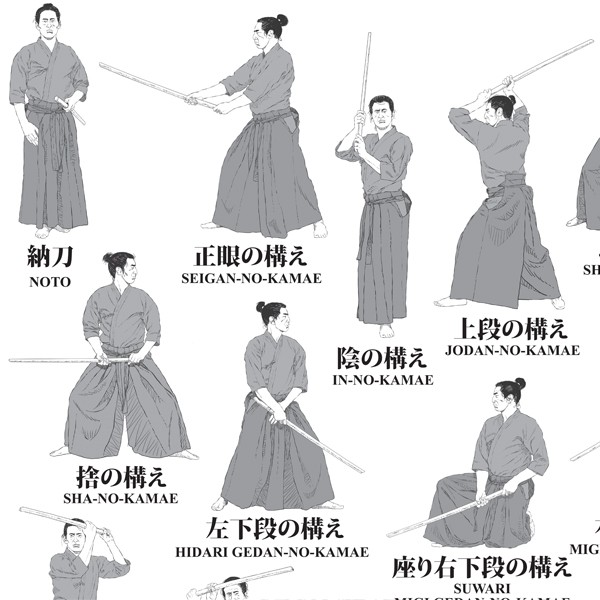


Judo is a grappling art, involving throwing, joint locks and chokes. Where Tae kwon do stresses high kicking technique, Shotokan is grounded and uses more hand technique, though it has an arsenal of kicks as well. It is renowned for its strong stances and powerful techniques. Shotokan is now the most widely practiced style of karate in the world. How is karate different from other martial arts? But the beginners’ course shows you the start. It will take time to develop the skills and reflexes necessary to defend yourself and others from a physical attack. “Karate-do is a lifetime study,” says the adage.
#Iaido stances movie
We are trying to develop sound fundamentals not movie stars. You will not learn jumping kicks, spinning techniques, breaking boards or contact sparring. In this six week program, you will learn the basics of karate etiquette, discipline, fundamentals, form, one-step sparring and self-defence. He adapted this lethal art so it could be practiced safely in schools. Shotokan karate was developed early in the 20th century by Funakoshi Gichin who brought karate from Okinawa to Japan. Karate is usually translated from Japanese as empty hand. It is a Japanese art with its origins in Okinawa and southern China. Other than this nuance, the two terms are pretty much the same.Kids (8 to 12 years): Monday and Wednesday 6 to 7pmĪdults (13 and up) Monday and Wednesday 6 to 7:30 PM Iaijutsu, however, is an older concept that specifically involves teachings from a martial arts school, whereas iaido does not. Both martial arts involve unsheathing and drawing a sword. The difference between iaido and iajutsu is subtle at best.

In comparison, iaido is often practiced alone and without any guidance from a specific school of martial arts. When looking at the name, "iaijutsu" is affixed with the word "jutsu," which means "to study" or "the study of." Therefore, iaijutsu and other words with the "jutsu" prefix are typically associated with entire schools of martial arts. The main difference, however, is that iaijutsu is part of a broader, more wide-reaching school of Japanese martial arts. The Difference Between Iaido and Iaijutsuīoth Iaido and Iaijutsu focus on unsheathing and drawing a sword, typically a katana or similar singled-edged sword with a curved blade. Over time, this practice took on a life of its own, with many martial arts schools teaching iaijutsu to samurai warriors so that they could better defend themselves on the battlefield. Samurai warriors learned iaijutsu so that they could unsheathe and draw their swords - typically swords with a single-edged, curved blade - more quickly and efficiently. Historians believe that iaijutsu originated as a concept of the bujutsu system for samurai warriors. Iaijutsu, on the other hand, is believed to have appeared around the second century B.C. Therefore, they had to practice unsheathing and drawing it, thereby paving the way to iaido. While other traditional Japanese swords were worn with the cutting edge facing down, samurai warriors wore the katana with the cutting edge facing up. This was particularly important when carrying a katana because of the unique way in which the katana was worn. Back then, samurai warriors would practice unsheathing and drawing their sword before entering combat. With that said, the true origins of iaido can be traced back to Japan's feudal period.

So, what's the difference between iaido and iaijutsu?Īccording to Wikipedia, iaido first appeared in the 1930s, during which several schools can began teaching the martial art to practitioners. You'll find them spoken in Japan and other parts of the world today. The terms "iaido" and "iaijutsu" are often used interchangeably when referring to traditional Japanese sword-drawing techniques.


 0 kommentar(er)
0 kommentar(er)
